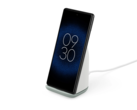Google finally unveiled the Pixel 6 and Pixel 6 Pro phones today powered by a custom-built SoC called Tensor. Unfortunately, exact specifications from the horse's mouth are still scarce though Google did indicate it uses two Cortex-X1 cores and a 20-core GPU.
According to Google's Phil Carmack and Monika Gupta speaking to CNET, the goal with Tensor was to bring AI at a more personal level to the end-user. Carmack said,
We did something different than the rest of the Android ecosystem is doing because we didn't build it in order to win a benchmark of single threaded performance for the minimum amount of dollars invested. We built it to deliver the experiences. … Having two really high-performance cores helps us get better overall responsiveness and better overall sustained performance."
XDA Developers had previously managed to unearth from an actual Pixel 6 Pro phone the likely CPU specifications of Tensor. Digging through the /proc/cpuinfo file, XDA Developers discovered that Tensor almost definitely sports:
- 2x ARM Cortex-X1 cores at 2.802 GHz
- 2x ARM Cortex-A76 cores at 2.2563 GHz
- 4x ARM Cortex-A55 cores at 1.80 GHz
While the two Cortex-X1 cores put Tensor ahead of SoCs such as the Exynos 2100 and Qualcomm Snapdragon 888, the reason for using two Cortex-A76 cores instead of the more modern Cortex-A78 is not yet clear.
The other Tensor units include a 20-core ARM Mali-G78 MP20 GPU, a Tensor Processing Unit ML engine, an advanced image signal processing (ISP) unit, a Tensor security core, a Context hub for low-power activities such as the always-on display, and 8 MB system cache along with a 4 MB L3 cache. Working alongside the Tensor security core is a Titan M2 security co-processor.
Going custom does give a lot of leeway to Google to better match the hardware capabilities and software experiences a la Apple. The Tensor is thus about 80% and 370% faster in CPU and GPU tasks, respectively compared to the midrange Snapdragon 765G in the Pixel 5.
Even with all that power under the hood, Google claims upwards of 24 hours of battery life with the Pixel 6 series. Of course, we will be able to confirm these claims and test other features once we get our hands on the Pixel 6 and Pixel 6 Pro, so stay tuned for our reviews.
Buy the Spigen Ultra Hybrid case for the Google Pixel 6 on Amazon

































